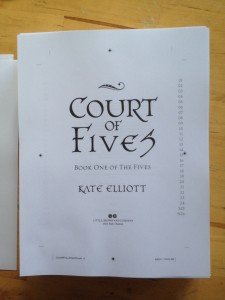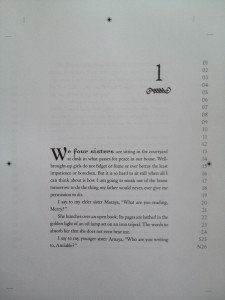Please join Justine Larbalestier and myself today, and any day, in discussing women’s bestselling fiction from the 20th century, our ongoing 2014 project.
From the Houghton Mifflin 1991 edition:
THE STREET tells the poignant, often heartbreaking story of Lutie Johnson, a young black woman, and her spirited struggle to raise her son amid the violence, poverty, and racial dissonance of Harlem in the late 1940s. Originally published in 1946 and hailed by critics as a masterwork, The Street was Ann Petry’s first novel, a beloved bestseller with more than a million copies in print. Its haunting tale still resonates today.
As always, this post is strung together from our email exchanges.
+++
JL: I’m finding The Street extraordinary. After really struggling to get into it—that opening—if I were the editor I totally would have cut it. But it’s so depressing and that’s slowed me getting through it. I fear how it ends. I want so much for things to work out for Lutie and her son, Bub but I really don’t think they’re going to.getting through it. I fear how it ends. I want so much for things to work out for her and her kid . . .
KE: I also found The Street extraordinary, with powerful writing and stark, effective characterization but OMG SO DEPRESSING. And yet that it is hard to read is the whole point. Oh, and I disagree with you about the opening. It drew me in as it set the stage.
JL: Usually I avoid depressing books. The Street is the most matter of fact writing about sexual harassment and sexual predation I’ve read from that period. I was really stunned by it. I see people tweeting similar things every day. But Petry was writing this in the 1940s. I wanted to hug her. Her book is such a refreshing change from the whiter-than-white books we’ve been reading to see race not just discussed but there on every single page.
It’s also the most explicitly angry of the novels we’ve read. Such rage. Such justified rage. What I love though is that the reader understands even the vilest characters, like the nightclub dude, Boots Smith, and the Supe and the madame, Mrs Hedges. The most terrifying, vile presence for me was the omnipresent white guy, Junto, who was so creepy so awful so powerful. I felt unclean every time he was mentioned. Yet, he was rarely in any scenes, rarely said anything yet he controlled everything. He was like the living embodiment of white supremacy.
KE: One of my preconceptions that has been blown apart by reading these novels has been that no one talked about sex in any way shape or form, and I wonder why I had that preconception: Perhaps because of tv and film’s more stringent code? I’m not sure. All the books have dealt with sexual misconduct, sexual taboos, sexual harassment, and sexual violence, and I agree with you that Petry really displays how ugly sexual predation is for the women who are preyed upon and doubly so for Lutie because she is a black woman. It’s relentless. Again, I’m amazed this was published in 1946. But that says much more about my preconceptions than anything else.
JL: Maybe I’ve read more from the period but I was not as surprised as you. However, I found it unbelieveably refreshing to see so many things: misogny, racism, sexism, up front and central on the page. No hinting, no pussy footing around, The Street made me realise what had been driving me crazy about the previous books we’ve read for this bookclub. Those white women are so blind to their own oppression and to the way they oppress others.
KE: Yes — it’s so stark and right there on the page. What is most striking to me is how it shows up the other three books we’ve so far read as . . . I don’t know . . . as glib. I love Valley of the Dolls, but somehow all the difficult issues get coated in a sheen of breathless entertainment. Petry never goes for that; she doesn’t see people’s misery and tragedy as entertainment. She makes the reader look at the devastation racism and sexism wreak in people’s lives. There’s nothing actually “entertaining” about it.
JL: Yes, The Street wasn’t entertaining. It made me realise how rarely I read books like this. I veer away from unrelenting, painful reads.
KE: Yes, me too. Then I felt ashamed for veering. In all honesty when I read about unrelenting and painful things I read non-fiction. Somehow in fiction — perhaps because the writer is really drawing you in emotionally using (perhaps) different techniques from non fiction — it gets so very raw, and Petry really really makes this raw. She does not let the reader look away or gloss over anything.
JL: You’re so right about non-fiction. This kind of bleakness, of genuine dystopia, is, for me, more what I read in non-fiction and mostly avoid in fiction. It’s not about happy/not happy ending. Pretty much none of the books we’ve read have had happy endings. But none of them have been so grim and unrelenting as this book. As you say, they’ve all been shiny and safe, by which I mean not too confronting.
Implicit in everything we’re saying is that our lives are not this bleak. Reading The Street sometimes I felt like a voyeur, like I shouldn’t be reading this book. It was not intended for me. Whereas all the other books we’ve been reading are squarely aimed at white middle-class women like myself.
I can’t imagine what it would have felt like for an African-American woman to be reading it when it came out in the late 40s. I’ve been poking around online trying to find out more about the reception at the time and not turning up much. But it must have been tremendous for it to have sold more than a million copies and for The Street to still be in print today.
I’m not going to lie, this book made me weep on several occasions, and the ending is absolutely devastating. It’s been days now since I finished and I still can’t bring myself to pick up another novel.
KE: Yes, to all this. I should also say that the fact I never read this novel or heard of it until this year says everything about how literature written by African-Americans has been placed into a separate category rather than being part of American Literature where it belongs because it IS fully part of the American experience that everyone should know.
As I was reading–and it is a difficult, emotionally harrowing read–I would sometimes reflect on conversations within SFF about “grimdark” and realism, and I can’t help but compare the glib violence of supposed grimdark realism with The Street, which is as real as it gets.
The way Petry peels away Lutie’s efforts to build a decent life for herself, the slow steady way the story erodes her hope, is devastating. I keep coming back to that scene where a man is lying dead on the sidewalk (and the detail Petry goes into just describing his shoes and what his shoes say about his life!) and the police bring a girl forward to identify him (the “burly Negro” episode where the journalist describes a starvingly thin man as a “burly Negro” in his story).
Lutie didn’t look at the man’s face. Instead she looked at the girl and she saw something–some emotion that she couldn’t name–flicker in the girl’s face. It was as thought for a fraction of a second something–hate or sorrow or surprise–had moved inside her and been reflected on her face. As quickly as it came, it was gone and it was replaced by a look of resignation, or complete acceptance. It was an expression that said the girl hoped for no more than this from life because other things that had happened to her had paved the way so that she had lost the ability to protest against anything–even death suddenly like this in the spring.
This is what good writing does: it encapsulate truth in a paragraph. This entire novel is the paving of that way for Lutie.
JL: Yes. That’s a perfect moment of oh so many in this book. Petry is a great writer. And a stark reminder to those of who are not African American that what happened to Trayvon Martin, had happened many, many times before: a slight black boy turned into a burly monster by the lies of the police and the media and the result is that a white man gets away with murder.
Having recently read Ta-Nehisi Coates’ brilliant essay on reparations it’s really not hard to see all of that playing out in Petry’s brilliant book.
KE: For me it was Isabel Wilkerson’s THE WARMTH OF OTHER SUNS, about the migration of African Americans from the South to the North across the 20th century, that really brought it home, and I agree that Petry unflinchingly describes the systemic injustice.
JL: Yes, and Wilkerson’s book was a huge influence on Coates. I couldn’t help thinking also about Slavery By Another Name. Basically about everything I’ve ever read about systemic racism in the USA after the abolition of slavery.
KE: Yes, Slavery By Another Name is another important example, and I would recommend everyone read these books.
KE: Petry spends time in many different heads, not just Lutie. We see Bub, the Super, Min, and so on, and even with an awful man like the Supe I feel she genuinely does him justice so you can see the humanity in him even as you hate him. His thought processes make sense, and they feel real. She reaches out so that the reader can see more fully “the street” that Lutie has to walk down.
JL: Yes, as I said above, she lets us into all of them so we can’t just dismiss them as evil. Because everything that happens to Lutie is not merely about meeting the wrong people, making wrong decisions, it’s about systemic racism, misogyny and sexism and the way the not only destroy her but also everyone around her.
KE: Can we discuss Lutie herself? So heartbreaking, this story. All she wants is to make a decent, independent life. She is a decent, smart, hard-working person. She does everything right but it is denied to her; it doesn’t matter, there’s nothing she could have done to make it work. Her sense of self and her desire to live with dignity are continually assaulted, and yet she works so hard to maintain them.
This is also a classic explication of intersectionality. She gets all the prejudice against being black, all the prejudice against being a woman, and then it is rolled together because she is a black woman and I really felt there was no harbor for her, no place where she could find protection or immunity, as it were.
JL: Lutie also gets the whole shit storm of being a gorgeous black woman, which makes her problems in some ways even worse because she does not have Min’s refuge of invisibility. It marks her as someone Junto wants to turn into a high-earning prostitute who will make him a lot of money but only after he’s had her himself.
After the other bestselling novels we’ve read The Street is like having a bucket of ice cold water thrown in your face. I’d like to make everyone read it. Especially those who believe that racism ended in the USA after 1865.
KE: Or after The Civil Rights Movement. Indeed.
Thank you for joining us, and PLEASE continue the discussion in the comments below.
July’s book: Patricia Highsmith’s The Price of Salt.


